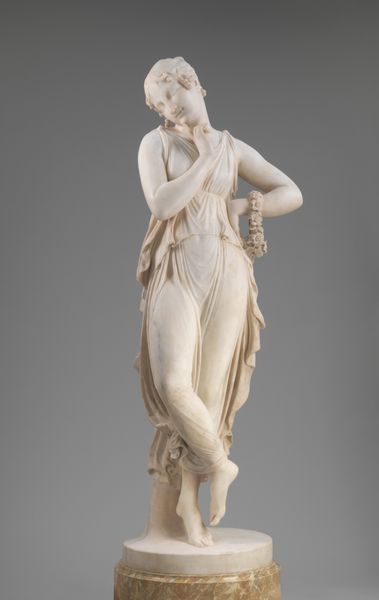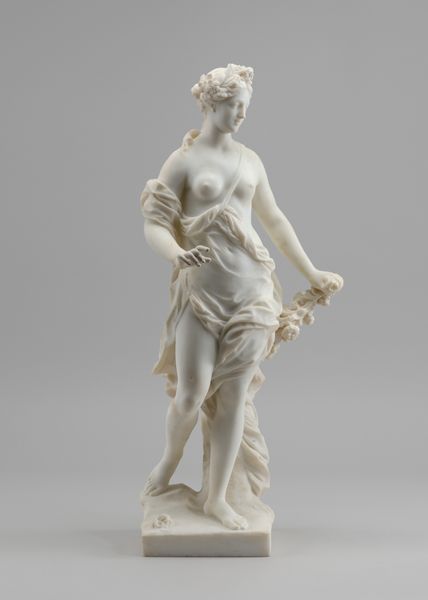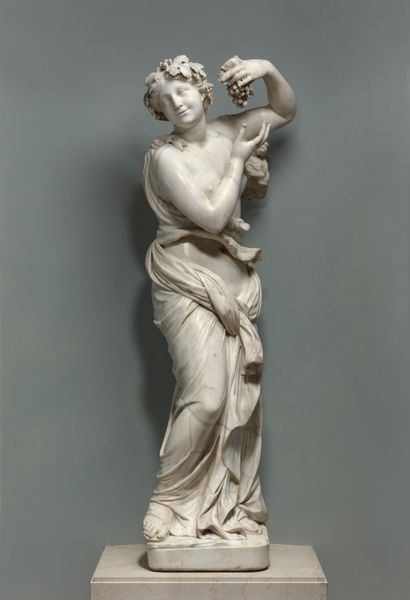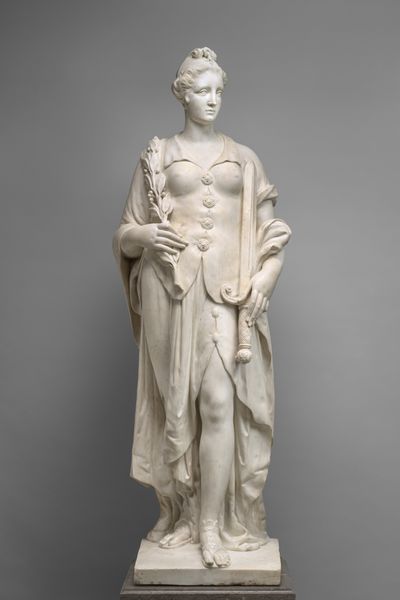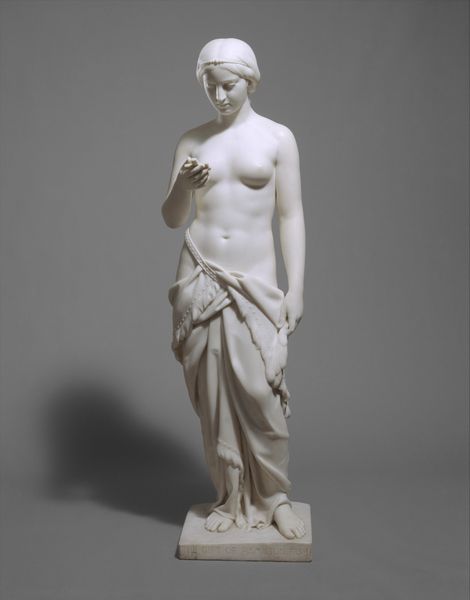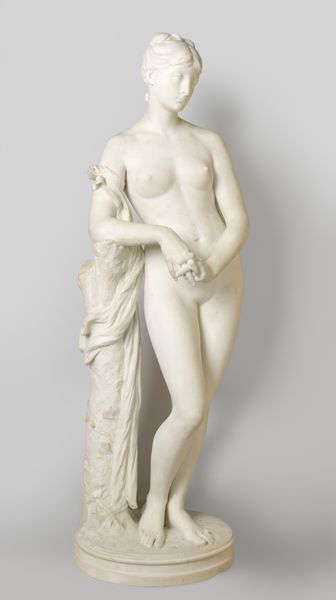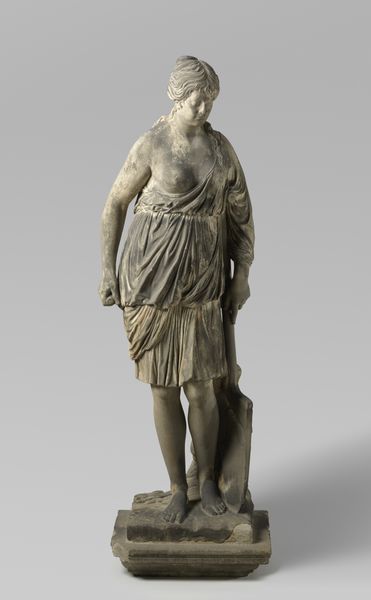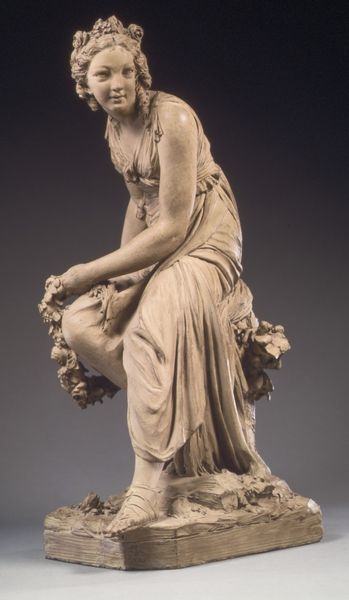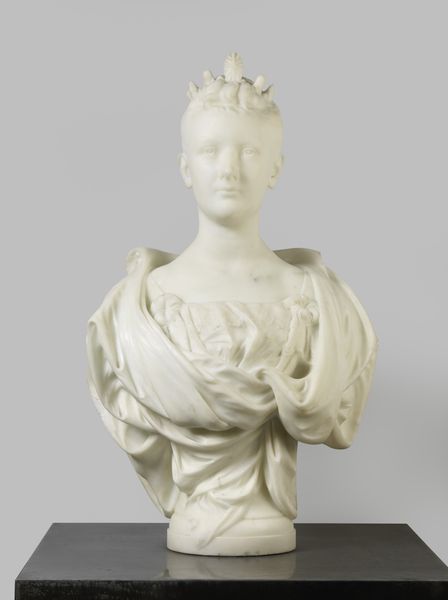
sculpture, marble
#
allegory
#
baroque
#
classical-realism
#
figuration
#
sculpture
#
marble
#
nude
Dimensions: height 199 cm, width 62.5 cm, depth 52 cm, weight 336.5 kg, height 85 cm, width 60 cm, depth 55 cm, weight 353 kg
Copyright: Rijks Museum: Open Domain
Curator: Here we see Abundantia, sculpted around 1637 by Pieter Adriaensz 't Hooft. It’s a marble work very much in the Baroque style. Editor: My first impression is one of restrained grace. Despite the nudity, there's a certain formality to the pose, a classical coolness. The draped fabric offers an intriguing interplay of textures and depths that engages the eye. Curator: Indeed. Consider how the artist uses the marble itself to convey different realities. Notice how the stone becomes fluid in the folds of the drapery, contrasting with the smoother, more matte finish of the figure's skin. This highlights the artifice inherent in sculpture. Editor: And the fruit she holds, a horn of plenty—a cornucopia. It clearly alludes to fertility, harvest, and of course, abundance. This makes sense considering that classical depictions of Abundantia almost invariably include this iconography. Curator: Precisely! The figure echoes classical ideals, reimagined through a baroque lens, particularly evident in the dynamism of the fabric and the realistic details rendered in marble. The interplay between revealed and concealed surfaces adds a layer of visual interest that speaks to 17th-century aesthetics. Editor: There is something enduring in this symbol: this timeless human desire for a fruitful earth, rendered through a figure that links present and the deep past. Looking at it now I also sense its implications for social inequities, and issues about what the earth can endlessly provide. Curator: Interesting. In purely formal terms, notice how the line of the draped fabric guides the eye throughout the entire composition, ensuring a continuous visual rhythm that unites the figure. Editor: Overall, seeing the work like this makes you question what exactly ‘abundance’ can mean. It reveals just how much the interpretation of this kind of art can evolve across centuries. Curator: Indeed, there is always room to interpret a work from fresh perspectives; the real essence of art is that dialogue that persists across centuries.
Comments
No comments
Be the first to comment and join the conversation on the ultimate creative platform.

